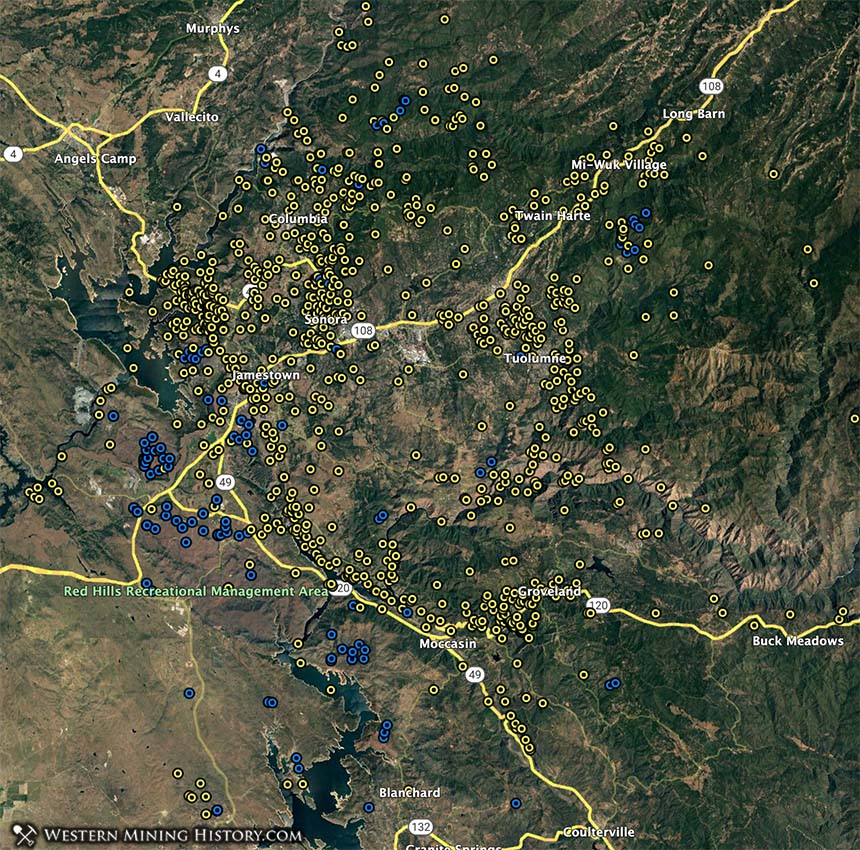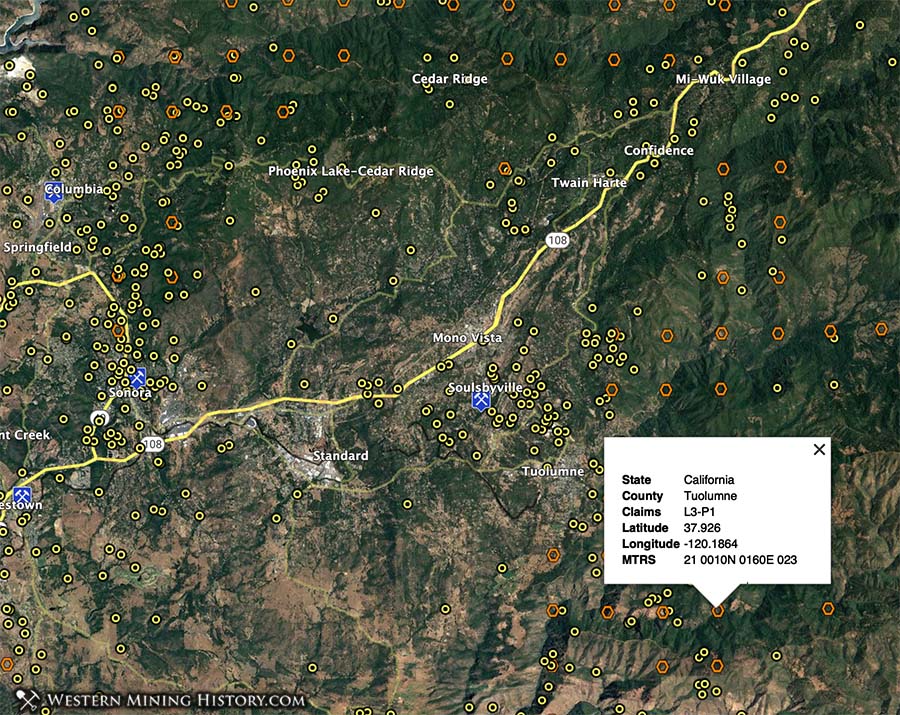Of the 1,174 USGS mine records in Tuolumne County, 986 list gold as a primary commodity. Manganese is the most reported primary commodity for non gold mines.
WMH Mine Discovery Tools for Google Earth are available for Tuolumne county

The USGS gives the following synopsis of Tuolumne County gold mining history:
Tuolumne County, one of the Mother Lode counties, is in central California between Calaveras County on the north and Mariposa County on the south.
In the 1850's the gold-rush prospectors and adventurers overran the entire Mother Lode country. They soon found the gold placers of Tuolumne County, which became the richest in California. During 1850-70 this county was one of the leading gold producers in the State. At least $151,175,000 (about 7,338,600 ounces) of placer gold was produced before 1899, mostly from the Tertiary and Quaternary gravels in the Columbia Basin and the Table Mountain channel in the Jamestown-Sonora area.
After 1890, as the placers were depleted, mining of quartz veins increased, and after 1903 lodes exceeded placers in production. Total estimated production for the county through 1959 was 10,131,000 ounces: 2,580,000 ounces from lodes and 7,551,000 ounces from placers.
Nearly all the lode mines lie in a zone about 14 miles wide that crosses the county from northwest to southeast. Deposits in the Mother Lode are along the southwest side of the zone near the contact between the Calaveras and Mariposa Formations. Deposits of the East Belt are on the northeast side, parallel to the Mother Lode. Between the two is a chain of small but rich deposits known as the Pocket Belt.
read the full USGS report on Tuolumne gold mines here.

